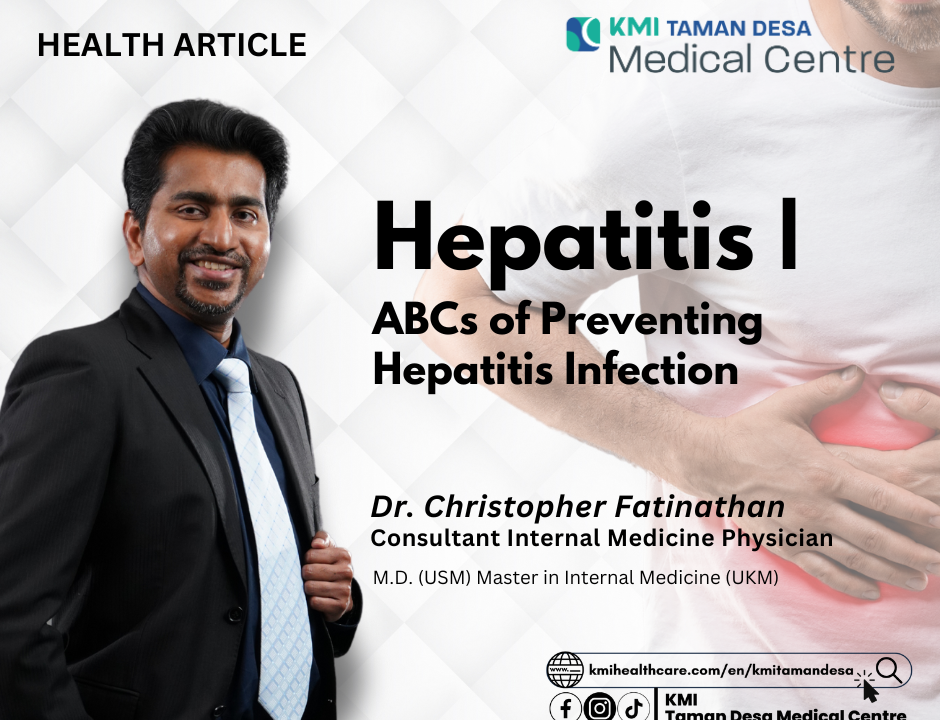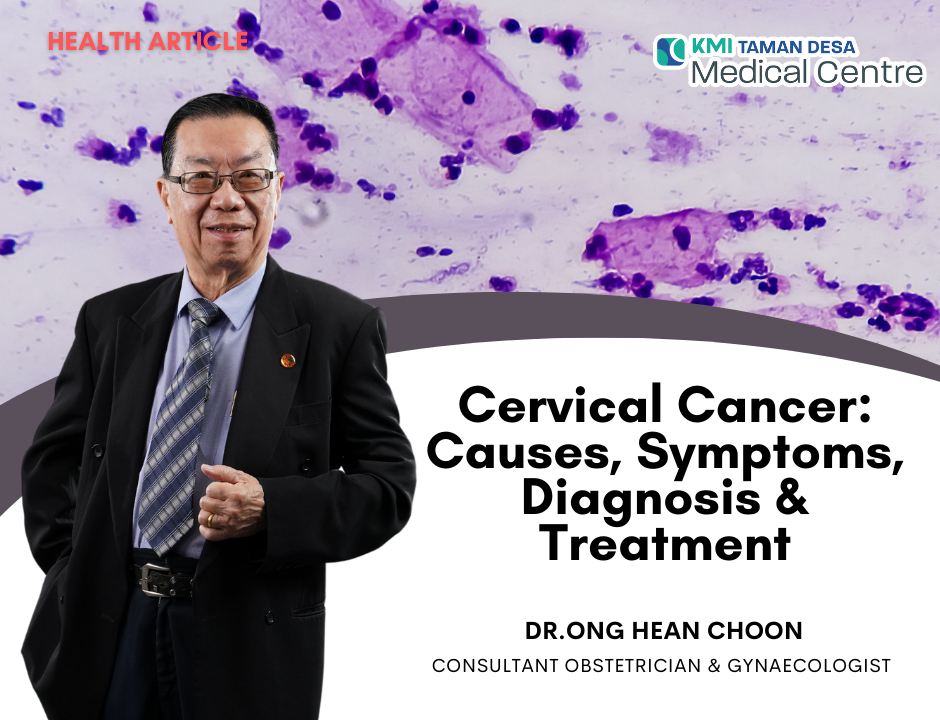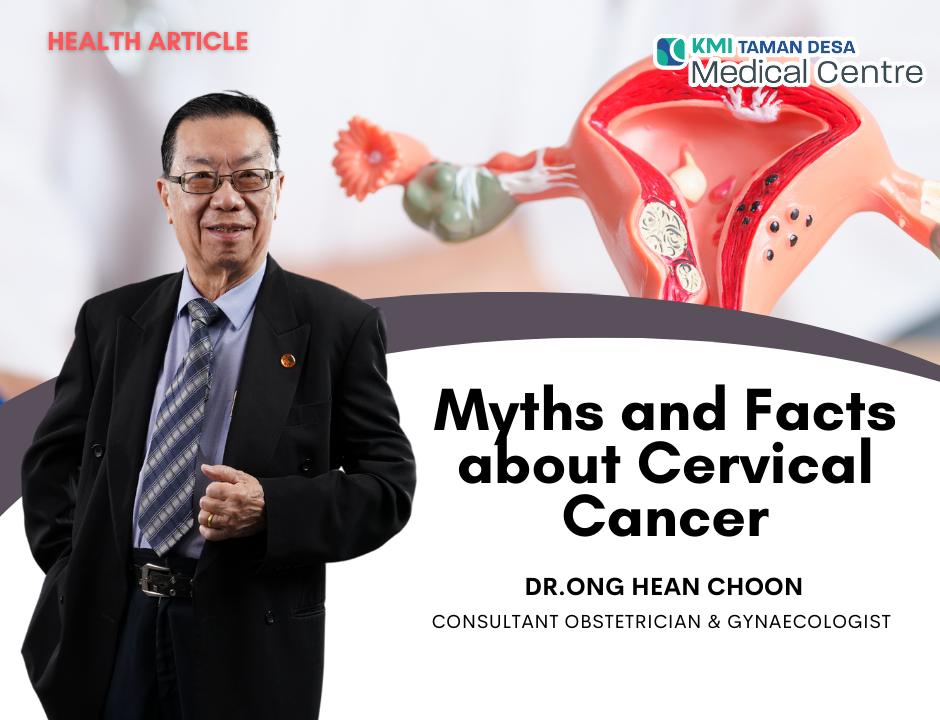[TDMC] CANCER OF THE CERVIX-Can It Be Prevented?

[TDMC]- CAN DIABETES BE REVERSIBLE?
13 October 2021
[TDMC] Children Of The Stars-AUTISM
14 January 2022Cancer of the cervix is the second most common cancer affecting women, first being breast cancer, and third, being colon cancer.
It is said that “when a woman starts having sex, she not only gives up her virginity, she also gives up her resistance to cervix cancer”.
How does cervix cancer develop ?
A simplified process is as follows,
Normal cell ————→ Pre-cancer cell ————-→ CANCER
HPV ( CIN )
infection Stages 1, 2 3
A normal cervical cell can develop into a pre-cancer cell (CIN = cervical intraepithelial neoplasia), going through 3 stages, 1, 2, and 3, and then, if unchecked, progresses to CANCER.
The most important factor inducing such a change is HPV infection, (human papilloma virus). HPV infection of the cervix is acquired through sexual intercourse.
Who are more likely to get cancer of the cervix?
Based on scientific studies, the high-risk groups of women include,
- Early age at first sexual intercourse
- Having multiple sex partners (including sex with partners who themselves have multiple sex partners)
- HPV infections of the cervix
- Occupational hazards, e.g. prostitutes, and any occupations that include sexual favours
HOW CAN CERVICAL CANCER BE PREVENTED?
Measures that can be taken include:
- Avoid starting to have sex relations at too early an age, e.g. below the age of 18 years
- Avoid having multiple sex partners. Avoid having sex with partners who themselves have multiple sex partners.
- Take HPV vaccination as early as possible, better if before starting any sexual activity.
[HPV vaccination]
HPV vaccination has been available in Malaysia for over 10 years.
It is advisable for young girls and young women to take this vaccination, and note, the younger one takes the vaccine, the higher the protection against developing CIN.
Vaccination can start from the age of 9 – 10 years old, according to international recommendations and guidelines.
Three ( 3 ) types of vaccines are available in Malaysia.
Please check with your doctor as to the availability of these.
The vaccines are given in 2 shots, or 3 shots in the upper arm by intramuscular injections. The schedule should be completed within 6 months.
According to current medical information, after completion of the schedule, the protection should last for a lifetime.
Based on current information, HPV vaccine is very safe, with no major or significant complications. Hence, even its recommended use in young girls.
For more details about the HPV vaccine, please check with your own doctor!
- Pap smear & HPV testing
Women who have had sex, should have routine and regular Pap smears of the cervix done. Current recommendations advise the following routine schedule,
- Women before menopause – once every 6 months
- Women after menopause – once every year
Older schedules had the primary aim of detecting cervix cancer.
Because of medical advances, the newer schedules aim to detect the disease at the CIN stage. This strategy aims to effectively treat the CIN, and thus, prevent development of cervix cancer.
At the Pap smear testing, women can opt for HPV testing using the same specimen taken by the technique of Liquid Based Cytology ( LBC ).
Such tests are easily available.
If your Pap smear results are reported as abnormal and/or your HPV testing is positive for the high-risk types, your doctor should refer you for a colposcopy test evaluation of the cervix.
[Colposcopy]
This is an examination done through an instrument called the colposcope. This is done on an outpatient basis, to examine the cervix more closely and carefully, using a special microscopic technique.
It is painless, easy to perform, and takes only about 10-15 minutes.
Of course, it must be performed by a properly trained colposcopist doctor.
At colposcopy, if there are any abnormal areas seen on the cervix, a small biopsy will be taken. This will be sent to the Pathology Laboratory for evaluation, and a histology report will be given.
If you have CIN, your doctor should recommend an appropriate effective method of treatment for it.
Treatment of CIN
There have been good medical advances in the treatment of CIN.
With modern techniques, there is no further need to do hysterectomies (removal of the uterus or womb) or even cone biopsies of the cervix (removing big chunks of the cervix) for CIN.
Current techniques allow the effective destruction of the affected cervix, together with the so-called “transformation zone”, from where the abnormal cells arise. These procedures are minor operative procedures, where you should be able to be discharged on the same day (day-care procedure).
Studies have shown very effective treatment results with such new techniques.
Women should seek out the relevant doctors who are trained in such procedures, and discuss your issues in details with such doctors, before agreeing for the treatment.
Many scientific studies have showed that these procedures can effectively treat the CIN, and effectively reduce the risks of cervical cancer.
This is a bonus for women!
CONCLUSION
So, the answer to the question raised in the title of this article, “Cancer Of The Cervix – Can It Be Prevented?” is YES !!!!
The main strategies are,
- Change of sexual behaviour, and habits, and sexual practices
- Practise a healthy sexual life!
- HPV vaccination, early on in life
- Regular Pap smear testing of the cervix
- Effective treatment of CIN
With all the above strategies, women can look forward to a better protection of their cervix, and prevent the occurrence of cervical cancer in their lives, and overall, to be able to live a better quality of life free from cervical cancer!
TAKE-HOME MESSAGE
Don’t delay and wait too long!
Come forward and protect yourself and your loved ones! Live well!
By Dr Ong Hean Choon
Consultant Obstetrician & Gynaecologist, & Menopause Consultant




